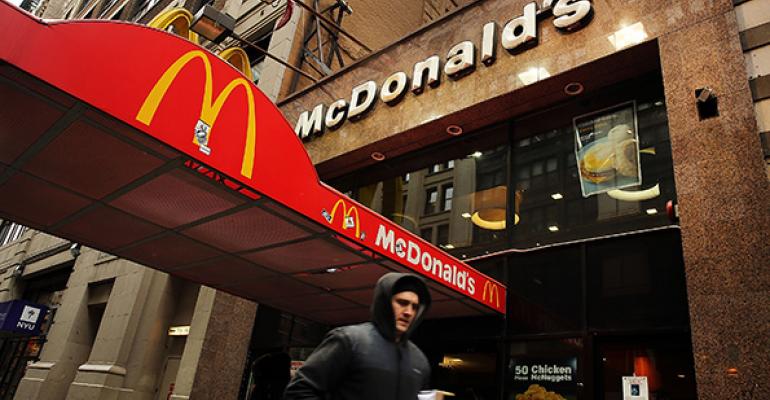Over the past two years, quick-service restaurants have figured out how to win back business from the industry’s giant, McDonald’s Corp.:
Do what McDonald’s did.
Consumers are not rejecting fast food. But they are rejecting McDonald’s, at least right now. The big chain’s same-store sales fell 1.7 percent in the fourth quarter of 2014.
By comparison, sales at McDonald’s primary competitors, Sonic, Jack in the Box, Wendy’s and Burger King, rose 4.7 percent in their final quarterly report for the 2014 calendar year. Do the math, and McDonald’s is underperforming its primary competitors by 640 basis points.
If we expand the QSRs to include chicken chains like Popeyes Louisiana Kitchen, KFC and El Pollo Loco as well as Steak n Shake and Taco Bell, the gap is even worse: 730 basis points.
That was wider than the 630 basis-point gap in the third quarter. And we suggest it’s widening even further. In February, McDonald’s same-store sales fell 4 percent — despite better weather, low gas prices and a massive ad campaign. Sonic’s same-store sales in its fiscal second quarter ending in February rose 11.5 percent. Anecdotal evidence suggests Burger King’s sales are flourishing early this year.
Many of these restaurant chains are simply more competitive than they were a few years ago.
The quick-service space is largely a zero-sum game in the current environment. Fast-casual chains have put a cap on the type of consumer that QSRs can attract — meaning that someone who wants a really good burger will opt for Five Guys or Shake Shack rather than McDonald’s.
The business is also saturated. Most QSRs are expanding only slowly, if they’re expanding at all. Some, like KFC, have been shrinking.
Quick-service diners are a notoriously disloyal bunch. In the decade between 2002 and 2012, Wendy’s, Burger King and others struggled year after year. McDonald’s remodeled restaurants and added new products and dayparts. It flourished with almost no resistance.
In the past couple of years, however, other QSRs have worked hard to get their business to be more competitive with McDonald’s. And they’ve largely copied McDonald’s recipe of new products and remodeled restaurants. They’ve also outdone McDonald’s when it comes to technology and, certainly, social media.
Burger King quickly refranchised and aggressively remodeled units and has unleashed numerous limited time offers. Some of them go right at McDonald’s throat, such as the $1.49, 10-piece chicken nugget deal reintroduced in January. Burger King also thrives when it comes to social media while McDonald’s fails repeatedly.
Wendy’s, likewise, is refranchising, remodeling and offering a combination of value and premium items. Jack in the Box has remodeled its locations and is using innovative ads and products. Taco Bell introduced breakfast. Sonic went back to the marketing strategy it used to be so successful in the decades before the recession hit in late 2008.
Some of these chains have even started using McDonald’s real estate strategy — as Jack in the Box and Burger King sold locations to franchisees, they kept some real estate ownership.
Many people, McDonald’s included, suggest that consumers’ preferences are changing and they’re shifting away from the chain’s style of business. But these numbers, and the competitors’ own activities, suggest that the problem is much more simple than that.
If consumers’ preferences are shifting that much, then they’d likely be shifting their business away from other quick-service restaurants, too. And those QSRs wouldn’t be so quick to adopt many of McDonald’s own strategies for success.

